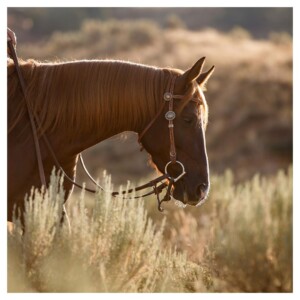The Price of a Quarter Horse: Factors to Consider
The Quarter Horse is a breed of horse that stands between 14 and 16 hands tall and weighs between 950 and 1,200 pounds. The breed has a muscular, compact build, broad chest, and powerful hindquarters. The Quarter Horse is known for its speed, agility, and versatility, making it suitable for a variety of activities, including racing, rodeo events, ranch work, and recreational riding.
American Quarter Horse History
 The American Quarter Horse is a breed that has become an integral part of American history. It is a versatile horse breed known for its speed, strength, and agility. The breed’s origin can be traced back to colonial America when Spanish explorers brought horses to the new world. The horses were a cross between the Spanish Barb and the native horses of the American continent.
The American Quarter Horse is a breed that has become an integral part of American history. It is a versatile horse breed known for its speed, strength, and agility. The breed’s origin can be traced back to colonial America when Spanish explorers brought horses to the new world. The horses were a cross between the Spanish Barb and the native horses of the American continent.
The breed’s name originated from its ability to outpace other horse breeds in one-quarter of mile-long races. The breed’s popularity continued to grow, and by the late 1800s, the American Quarter Horse became the most common horse in the United States.
Why Quarter Horses Are Popular
The American Quarter Horse is one of the most popular horse breeds in the United States and around the world. Its popularity has several reasons, including its versatility, athleticism, and intelligence. The breed is also known for its friendly disposition and willingness to work, making it an excellent horse for beginners and experienced riders.
Factors that Affect the Price of a Quarter Horse
The price of an American Quarter Horse can vary significantly depending on several factors, including:
- Breeding
- Age
- Conformation
- Training and riding experience
- Show experience
- Health condition
The price can range from a few thousand to several hundred thousand dollars. The price is typically higher for horses with a successful show record, well-bred, and extensive training and riding experience.
Breeding/Bloodlines
The breeding and bloodlines of a Quarter Horse can significantly impact its price. Horses that are well-bred with proven bloodlines are typically more expensive than horses with unknown or mixed breeding. The bloodlines can also provide insight into the horse’s potential abilities and temperament.
Age
The age of a Quarter Horse can also impact its price. Younger horses that have yet to be trained or ridden may be less expensive than older horses with more experience. However, well-trained and experienced horses may have a higher price tag, regardless of age.
Conformation (Physical Appearance)
The physical appearance of a Quarter Horse, also known as its conformation, can also affect its price. Horses that have balanced and proportionate conformation are typically more expensive than horses with structural faults, such as poor limb alignment or uneven feet.
Training + Riding Experience
The amount of training and riding experience a Quarter Horse has received can also impact its price. Horses with extensive training and experience in specific disciplines, such as reining or cutting, may have a higher price tag than horses with little or no training.
Show Experience
The show experience of a Quarter Horse can also influence its price. Horses that have a successful show record and have won significant awards or titles may be more expensive than horses with no show experience or those with limited success.
Health Condition
The health condition of a Quarter Horse can also affect its price. Horses that are in excellent health, free from any medical issues, and have current vaccinations and health certificates may be more expensive than horses with chronic health problems.
Purchasing a Quarter Horse
If you are interested in purchasing an American Quarter Horse, there are several things to consider. Here are some tips to help you find the right horse for you:
Where to Find Quarter Horses For Sale
You can find American Quarter Horses for sale through a variety of sources, including breeders, trainers, private owners, and online marketplaces (see current Western Horse listings here). It’s essential to do your research and choose a reputable seller who can provide you with information about the horse’s background, training, and health.
What to Look for When Purchasing a Quarter Horse
When evaluating a Quarter Horse for purchase, there are several factors to consider:
Conformation: Look for a horse with balanced and proportionate conformation, with no structural faults that could impact its health or performance.
Temperament: Choose a horse with a friendly and willing disposition that is suitable for your riding level and intended activities.
Training and experience: Consider the horse’s training and riding experience and its performance in shows or competitions.
Health condition: Ensure the horse is in good health, free from any medical issues, and has up-to-date vaccinations and health certificates.
Pedigree: Research the horse’s breeding and bloodlines to gain insight into its potential abilities and temperament.
Tips for Negotiating the Price
When negotiating the price of a Quarter Horse, keep these tips in mind:
Do your research: Research the horse’s background, training, and performance to determine its fair market value.
Be prepared to walk away: If the seller’s price is too high, be willing to walk away and continue your search elsewhere.
Offer a fair price: Make a reasonable offer based on the horse’s value and your budget.
The American Quarter Horse is a versatile and popular breed with a rich history. When purchasing a Quarter Horse, consider factors such as breeding, age, conformation, training and experience, show experience, and health condition. Use these tips to find the right horse for you and negotiate a fair price with the seller. When done right, you’re bound to find a fine horse that will be a great partner for years.